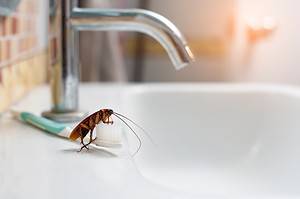An absolute paradise awaits you in Hawaii. Known for its beautiful beaches, volcanoes, and numerous national parks, this place is one of the most popular travel destinations in the world. However, as beautiful as Hawaii is, there are also some unwanted guests that live there, such as cockroaches, which can be a real hassle to deal with. Since Hawaii has a tropical climate, it would make sense that roaches would be extremely attracted to the area. While they are harmless most of the time, there are a few of them that definitely aren’t good for humans to have around the house. It’s important to know how to identify and avoid these pests because they can be both annoying and dangerous.
Here are the most prevalent types of cockroaches commonly found in Hawaii, along with a few tips on how to prevent them from entering your home or business.
Most Common Species of Roaches in Hawaii
Hawaii is actually home to 19 different species of cockroaches. However, not all of them are considered pests that enter people’s homes. Locals, however, have a hard time dealing with a few species which can be major pests. Understanding the differences between the main types of roaches found in Hawaii can help you prevent and eliminate the particular species you’ve encountered. So below, we’re going into detail about the five most common species of roaches found in Hawaii.
American Cockroach

In Hawaii, locals refer to the American roach as the B52 roach.
©Guillermo Guerao Serra/Shutterstock.com
The American roach, or “B52 roach” as it is commonly known by Hawaiians, is one of the largest species of roaches found in the United States. They are also one of the most commonly encountered roaches in Hawaii. Reddish-brown in color, these enormous insects measure 2 inches long. Moreover, American roaches possess wings and huge antennas, which makes them even worse to look at!
It is possible to find B52 roaches both inside and outside, as they tend to be found near food sources. Yards, gardens, trash, and sewers are particularly attractive places for them to live because there is plenty of water and food there for them to eat. They are typically found in moist areas in homes, like bathroom sinks, kitchen sinks, and drains. This type of roach picks up a variety of bacteria during its travels, and thus, having them in your home is both unhealthy and dangerous due to their bacteria-filled environment.
An American cockroach is omnivorous, which means it can eat a wide variety of foods. In spite of this, they are more likely to enjoy sweets, carbohydrates, and meat than other food options.
Surinam Cockroach
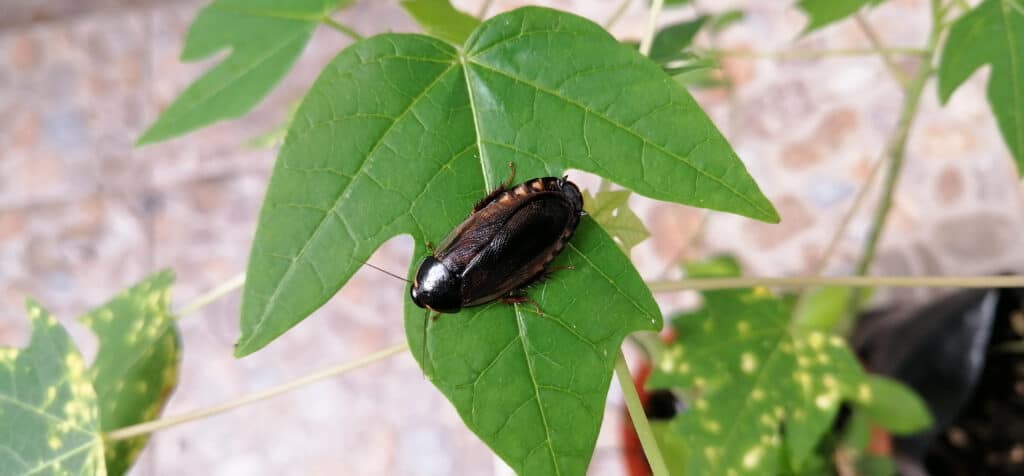
Surinam cockroaches are often found near garbage cans or sewers and usually live in decaying organic matter.
©iStock.com/Luis Serrano
In Hawaii, Surinam cockroaches are one of the most common species of cockroaches that can be found. In addition to their official name, they are also called Hawaiian cockroaches. As far as size is concerned, these cockroaches are at most three inches in length and have a dark brown or black color. It is not possible for Surinam cockroaches to fly, but they are capable of jumping high.
Surinam cockroaches are often found near garbage cans or sewers and usually live in decaying organic matter. Locals don’t always consider Surinam cockroaches a pest, but if they get into homes or businesses, they can create a nuisance. Most of the time, you’ll see them rummaging through garbage cans at night or hanging out in the soil. Their favorite things to eat are roots and stems. Those who grow roses, lilies, or pineapples will already be aware of the problems that these insects can cause.
Most chicken raisers are familiar with them as well. Chicken feces attract this species of roach to chicken coops. Chickens, however, are particularly vulnerable to their damage. Known for carrying chicken eye worms, Surinam cockroaches can damage chicken’s eyes and cause them to become blind.
German Cockroach

German roaches are among the most difficult ones to get rid of in an infestation.
©7th Son Studio/Shutterstock.com
Every island of Hawaii is home to German cockroaches, particularly in structures that are manmade. The backs of these little roaches are brown and feature two dark stripes. These tiny cockroaches are much smaller than outdoor species like the B52 roach or Surinam. They only grow to be about a half-inch long. Due to their small size, German roaches are difficult to detect, even in a growing infestation. In most cases, German cockroaches can be found in kitchens and bathrooms, where food and water are usually supplied to them.
The German cockroach eats leftover food, such as crumbs left on countertops or floors. Toilets and sinks are also sources of water for them. These roaches are harmful, as they are capable of transmitting diseases and allergens. They reproduce quickly, too. It is possible for German roach infestations to become so severe that even professional pest control workers are unable to eliminate them completely.
Australian Cockroach
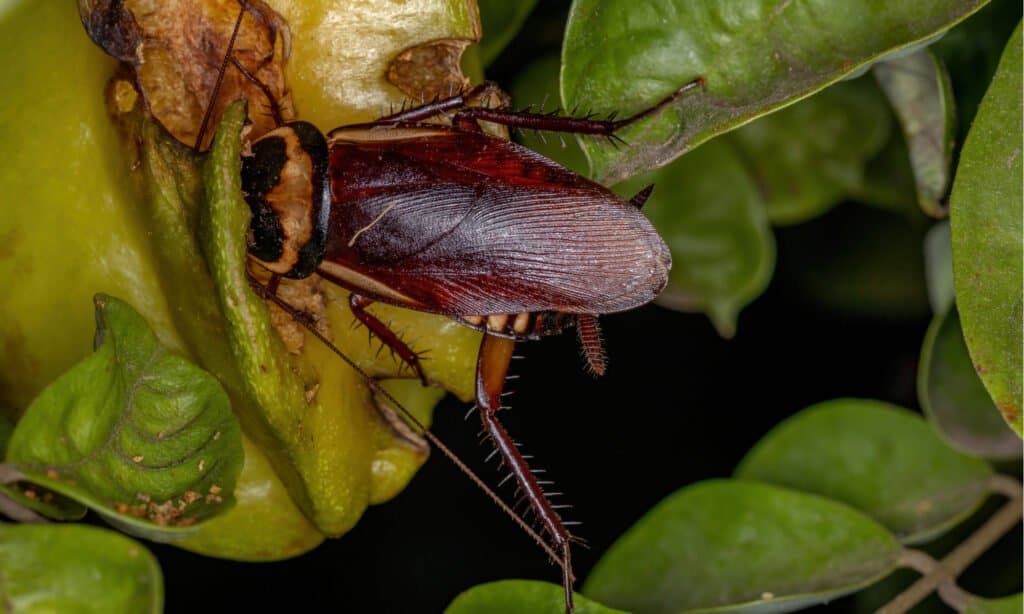
Australian roaches are often mistaken for American roaches as they are quite similar in appearance.
©Vinicius R. Souza/Shutterstock.com
Tropical environments are a common habitat for the Australian cockroach. When fully grown, they measure about 1.5 inches, causing some people to be scared of them! Although brown in color, they appear translucent at first glance. While they resemble American cockroaches, they are a bit smaller. In addition to forests and grasslands, Australian cockroaches can be found in urban areas as well. In your home, kitchens and bathrooms are often places where they can find food and water.
The Australian cockroach is an omnivore, which means it consumes both plants and animals. Insects, leaves, fruits, and fruits make up the majority of their diet. The majority of their activity occurs at night, as they are nocturnal. Their daytime hiding spots are cracks and crevices, where they guard against predators. Often seen around lights at night, they are also good flyers.
Brown-Banded Cockroach
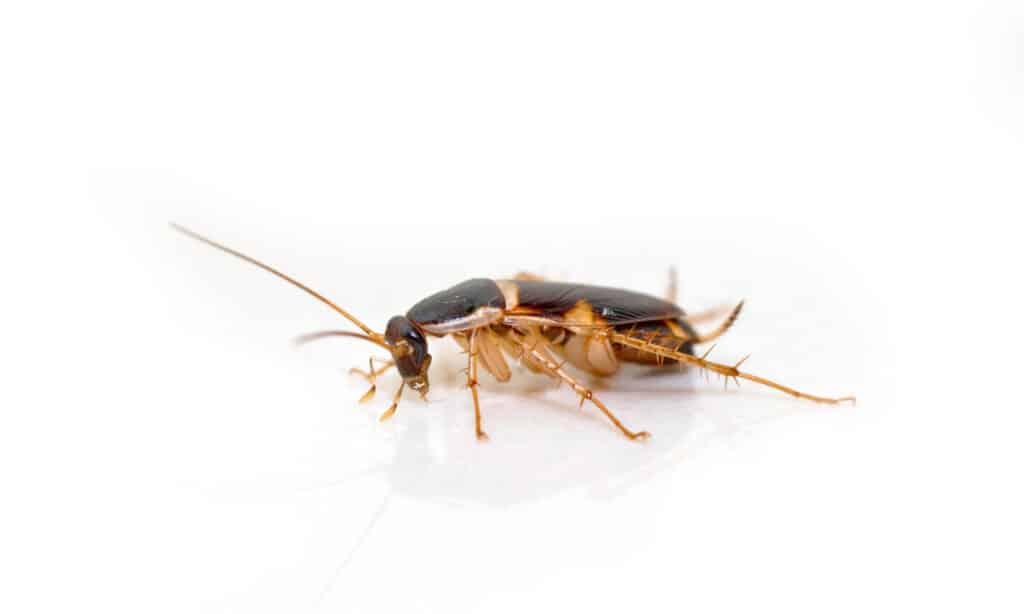
Brown-banded roaches once almost went extinct in Hawaii after a parasite almost destroyed them.
©Chumrit Tejasen/Shutterstock.com
In Hawaii, brown-banded roaches are still quite common despite a parasite nearly destroying the species. As with other roaches in Hawaii, they benefit from the tropical warmth. As fully-grown insects, they usually measure less than an inch in length. Compared to other types of cockroaches, this type of cockroach can be distinguished by the light brown bands that run along the back of their bodies.
Compared to other indoor roaches, brown-banded cockroaches have strange lifestyle habits. Unlike German cockroaches, this species prefers places without direct access to food and water, like closets, garages, and living rooms. The species also prefer to live high in places where the air is drier, and the warmth accumulates. They are less a fan of humid environments and prefer dry areas of your home. Cockroaches of the Brown-Banded species are omnivorous and feed on a wide range of foods. Their favorite foods are starchy foods such as pasta, bread, and cereal.
Are Roaches Common in Hawaii?
Hawaiian residents are well aware that cockroaches exist throughout the entire island chain. In spite of the fact that cockroaches aren’t native to Hawaii, they have now become common pests there. In the warm, humid climate of Hawaii, these insects thrived after being brought there by early Polynesian settlers. The little creatures live on the volcanic terrain, enjoy the sandy beaches, and sneak into human houses.
It’s no surprise that cockroaches are all across Hawaii because they are attracted to warm, humid environments. Throughout Hawaii, you can find cockroaches both in urban and rural areas, and they can be regarded as a nuisance pest in homes and businesses alike. Moreover, they can transmit diseases to humans, make some people ill, and may cause allergies in others. With so many people around and food sources available all combined with a tropical climate, it’s no wonder that roaches are prevalent throughout the islands of Hawaii.
How Big Do Roaches in Hawaii Get?
Locals and tourists alike frequently wonder how big roaches can get in Hawaii. Hawaii is fortunate to have roaches that don’t get to be as big as some other parts of the world. Compared to other cockroach species, Hawaii’s cockroaches are relatively small. However, they are still capable of growing to a length of about two inches. Brown or black in color and oval-shaped in shape, these pests have brown or black wings. As we mentioned above, the largest roach on the islands is the American roach or B52 roach. These pesky critters can grow to be about 2 inches long!
How To Resolve a Roach Problem in Hawaii
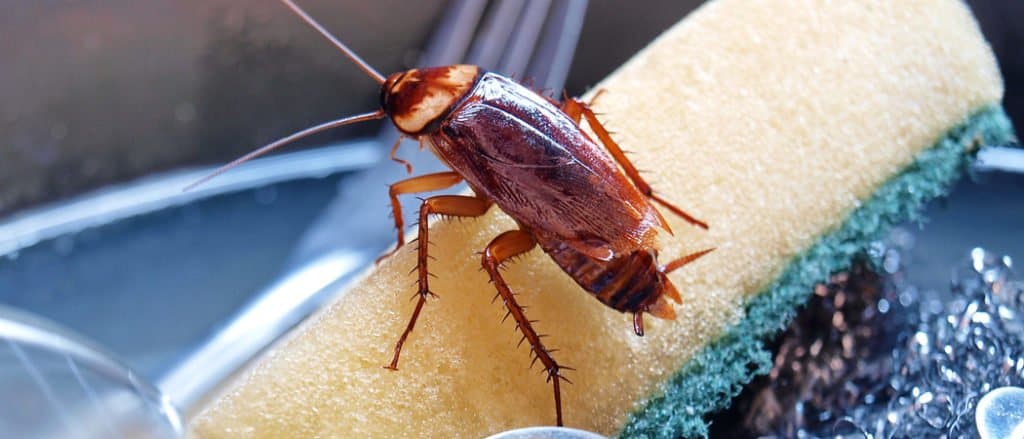
Getting rid of roaches in your home involves removing food sources and baiting roaches.
©kaninw/Shutterstock.com
It is imperative that you take immediate action if you live in Hawaii and suspect a roach infestation. Your home may be contaminated with harmful diseases or allergens if you don’t address the problem promptly. The solution to this problem involves several important steps that must be followed.
Residents of Hawaii can resolve roach problems by following these steps:
1. Taking Away Food and Water Sources From the Roaches
To get rid of roaches, the first step is to keep them from finding any food or water around your home or business. You can do this in several different steps. Start off by sealing off any food around the kitchen that the roaches could be getting into. Also, make sure that you aren’t leaving behind any crumbs on the floor, on the stovetop, or in any corners where the roaches can gain access to the food. You should place your garbage away from your house, or seal it up tight, too.
If you already have roaches in your home, you will need to eliminate all water sources that attract them. In order to prevent them from accessing water, you’ll need to fix any leaky sinks. Your home should also be free of open water sources. Making all of these efforts will help ensure that the roaches aren’t getting the food and water they need to stay alive.
2. Seal up Your Home
Your home should be sealed up in order to keep out roaches. The task is more challenging in tropical environments since the homes don’t have to be insulated against the cold. You should begin this step by checking your home to see if there are any potential entry points for roaches, for example, cracks or holes in the wall. Make sure you properly fill them in using a wood filler, a steel or copper mesh, and silicone caulk to seal them in successfully.
3. Set up Traps
Bait stations are perfect for areas where roaches have been spotted. As soon as a roach consumes the bait and dies, the rest of the colony starts feeding on him, and soon the colony is wiped out. For large infestations, you can also spray insecticide solutions around trashcans, water sources, and entry points in addition to baiting. All of these options will help kill the roaches that have already made themselves comfy in your home.
The photo featured at the top of this post is © kzww/Shutterstock.com
Thank you for reading! Have some feedback for us? Contact the AZ Animals editorial team.





